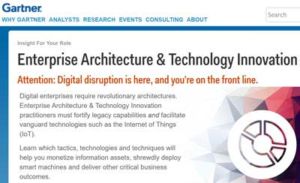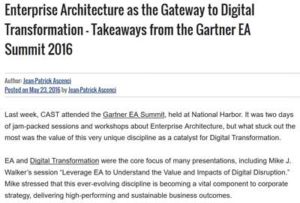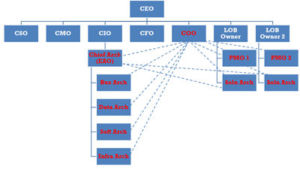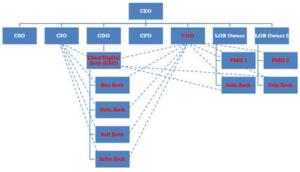Business practices of today have been inherited from generations before, and true to the “if it ain’t broke, don’t fix it” spirit, it is extremely hard to break free from decades-old tradition. So, many practices that have existed decades ago, are still being done today even though it may not be relevant anymore.
Enter the Digital Era and all its havoc-wreaking business disruptors; it is getting more difficult to know and prepare for what may be lurking around the corner – a new competitor that has never existed before, an online provider that sells cheaper and better than you, and many other kinds of unpredictable entrants.
Today, all of these are known as disruptors, for example Airbnb, Uber, fintech startups and so many more are using technology to disrupt their respective playing fields. This is in turn is forcing many bigger and established industry players to leverage digital technology more creatively and efficiently than ever before.
Those who don’t, will face dire repercussions.
According to Accenture’s CEO, over a half of the companies in the Fortune 500, have disappeared since 2000, because they were not able to cope with the changing times. I think this trend will be intensified many times over today because of digitalisation.
Unshackling from legacy technologies
The business landscape has changed tremendously in the last few years caused by new entrants who leverage digital technologies without having to worry about legacy technologies, and organisations are finding themselves neck-deep in a hugely different market environment, where time-to-market is drastically reduced, cost-efficiency means everything and consumerisation is transforming customers into fickle and harder-to-please individuals.
This trend will continue for many more years to come, and what businesses will have to face is a typical business cycle that now takes months or weeks, when in the past it would have needed ten years.
Clearly, the way we have been operating before, will not work today.
And Gartner has rightly pointed out that digital enterprises need to “fortify their legacy capabilities and facilitate vanguard technologies such as the Internet of Things (IoT).”


So, in order to grow and transform themselves, these enterprises with digital agendas need to establish a team and hire competent “professionals” who can cushion the whole enterprise from the impact digital disruptions.
I call these “professionals”, Digital Enterprise Architects and the team that they belong to is the Enterprise Architecture Office or EAO. The Enterprise Architect’s job entails helping enterprises make sense of what they currently have and pave the way for the business to deliver sustainable business outcomes through efficient technology adoption. More importantly, they architect the plan for the enterprise to grow and excel with digitalisation, stay relevant and become competitive market leaders.
To do this, enterprises have to become agile, connected and integrated throughout the whole organisation. It is of utmost importance that business and IT become more integrated, so as to enable translation of strategy from the Strategy Layer to the Business Layer all the way to the Technology and Implementation Layers.
The Enterprise Architect would develop a Digital Enterprise Architecture Map that would facilitate this integration and strategy realisation.
Where do you need the Enterprise Architect?
For the Enterprise Architect to function effectively, he must possess the business acumen along with the ability to sense the heartbeat of the business. He must be armed with the ability to validate, translate and integrate the business and technology strategy into the digital strategy to produce new enterprise capabilities.
With this objective in mind, where within the organisation, can the Enterprise Architect or the Enterprise Architecture Office (EAO) have the most impact?
These days, the EAO ideally must be staffed by qualified and competent Enterprise Architects in the domain specialisations of Business Architecture, Information Architecture, Software Architecture, Infrastructure Architecture and Solution Architecture. In a typical organisation, the EAO has the role of providing input to the Programme Management Office (PMO) that would ideally lead to a successful IT project implementation. It can work as a centralised model, as a distributed model where architects are working together with different lines-of-business (LOBs) or as a centralised-distributed combination.
Typically, the EAO reports to the CIO. With this line of reporting, the EAO is always connected to IT which is not necessarily a good thing, because the EAO becomes too focused on technology and IT projects. The rest of the organisation tends to view the EAO as just another IT department with a fancy name and the EAO loses visibility of and impact upon the whole organisation.
Ideally, the more effective structure is where there is also a dotted line from the EAO to the COO.
Or the EAO could be placed under the COO with a dotted line to the CIO. With a reporting channel to the COO, the EAO becomes business-driven; all IT projects have a business goal in mind and the enterprise architects will have easier access to business information like sales and financial information and company resources.
However, if the EAO is 100-percent under the COO’s purview, it may not get the support from IT that it needs and IT implementations that deliver business value, becomes an uphill task.
The following diagram depicts the preferred EAO structure within an organisation:

The digital transformation-focused EAO
I believe that for the EAO to be truly effective in an organisation that wants to excel as a market leader, it should be under the purview of a Digital Transformation Office (DTO), with reporting channels to the CIO and COO. This keeps the EAO balanced between IT and the business, and ensures that the EAO is always neutral.
The Digital Enterprise Architects would also be focused upon transformation of the business, and well they should because they possess the business skills and overview of the business that is best suited to drive business transformation.
With this configuration, the EAO is driven by business transformation initiatives, but the office’s reporting lines to the COO and CIO also serve important purpose. The EAO can keep working with the COO to develop new capabilities that the business can use to be more agile, productive and efficient. The Digital Enterprise Architects also have to keep working with the CIO to ensure that the technology strategy within the overall business strategy, is realised.
The following diagram depicts the digital transformation-focused EAO structure within an organisation:

One of the roles of the Enterprise Architect is to develop and visualise the Digital Enterprise Architecture Map so that the organisation can do continuous digital transformation and business troubleshooting.
Hence, where the Enterprise Architecture function is located within the organisation, can be pivotal to how successful the EA implementation is, and how optimally the enterprise would leverage and reap its benefits.
Because, besides shielding the enterprise from the full brunt of technological disruptions today, Enterprise Architecture can also be a catalyst for Digital Transformation for the organisation.
About the Author: Aaron Tan Dani is a thought-leader in Digital EA and he is also actively driving Digital EA adoption and currently he is the Chairman of EA-SIG, Singapore Computer Society aarontan@scs.org.sg, Chairman of Iasa Asia Pacific aarontan@iasahome.org and Chief Architect of ATD Solution aarontan@atdsolution.com







